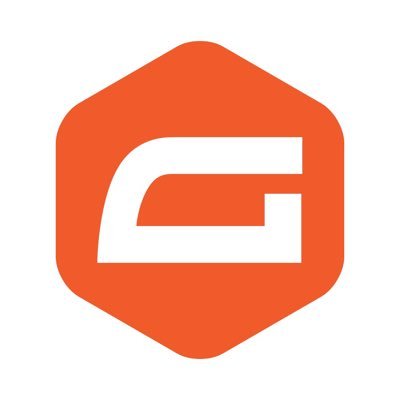ChargeOver and Gravity Forms integration
Save yourself the work of writing custom integrations for ChargeOver and Gravity Forms and use n8n instead. Build adaptable and scalable Finance & Accounting, workflows that work with your technology stack. All within a building experience you will love.


How to connect ChargeOver and Gravity Forms
Create a new workflow and add the first step
In n8n, click the "Add workflow" button in the Workflows tab to create a new workflow. Add the starting point – a trigger on when your workflow should run: an app event, a schedule, a webhook call, another workflow, an AI chat, or a manual trigger. Sometimes, the HTTP Request node might already serve as your starting point.
Build your own ChargeOver and Gravity Forms integration
Create custom ChargeOver and Gravity Forms workflows by choosing triggers and actions. Nodes come with global operations and settings, as well as app-specific parameters that can be configured. You can also use the HTTP Request node to query data from any app or service with a REST API.
Supported API Endpoints for ChargeOver
Get quote
Get the details of a specific quote.
Update quote
Update the details of an existing quote.
List quotes
Get a list of all quotes available.
Create customer
Create a new customer.
Update customer
Update an existing customer.
List customers
Get a list of all customers.
Get specific customer
Get details of a specific customer.
Delete customer
Remove a customer from the system.
Get customer
Retrieve details of a specific customer.
Create customer
Create a new customer record.
Update customer
Update the information of a specific customer.
List customers
Retrieve a list of all customers.
Add contact
Add a new contact user.
Update contact
Update an existing user contact.
List contacts
Get a list of all contact users.
Delete contact
Remove a contact user from the system.
Create invoice
Create a new invoice.
Update invoice
Update an existing invoice.
List invoices
Get a list of all invoices.
List transactions
Get a list of all transactions.
Create subscription
Create a new subscription for a customer.
List subscriptions
Get a list of all subscriptions available.
Get subscription
Get the details of a specific subscription.
Create item
Create a new item for sale.
Update item
Update the details of an existing item.
Delete item
Delete an existing item.
Store credit card
Store a new credit card for a customer.
Query credit cards
Retrieve all stored credit cards.
Delete credit card
Delete a stored credit card.
Store ACH account
Store a new ACH account for a customer.
Query ACH accounts
Retrieve all stored ACH accounts.
Delete ACH account
Delete a stored ACH account.
List customers
Retrieve a list of data from ChargeOver.
Get specific customer
Retrieve a specific record from ChargeOver using the record id.
Count customers
Get the total number of customers.
Count customers
Get the number of customers with a specific company name.
List revisions
Get the most recent 10 revisions of a customer.
List revisions
Get the most recent revisions for a customer with a limit.
Get customer by external key
Retrieve a customer using an external key.
Get customer by token
Retrieve a customer using their token.
List invoices
Get a list of invoices on a specific date.
List invoices
Get a list of invoices between two dates.
List invoices
Get a sorted list of invoices by total.
Create invoice for customer by external key
Add an invoice for a customer using their external key.
List users
Get a list of users with limit and offset.
Get item by external key
Retrieve an item using an external key with escape syntax.
Batch request
Submit multiple API requests in a single call.
To set up ChargeOver integration, add the HTTP Request node to your workflow canvas and authenticate it using a generic authentication method. The HTTP Request node makes custom API calls to ChargeOver to query the data you need using the API endpoint URLs you provide.
See the example hereThese API endpoints were generated using n8n
n8n AI workflow transforms web scraping into an intelligent, AI-powered knowledge extraction system that uses vector embeddings to semantically analyze, chunk, store, and retrieve the most relevant API documentation from web pages. Remember to check the ChargeOver official documentation to get a full list of all API endpoints and verify the scraped ones!
Supported API Endpoints for Gravity Forms
Send notification
This endpoint is used to send notifications for an entry.
Send notification
This endpoint is used to send notifications for an entry.
Create entry
Submit a new entry to the form.
Update entry
Update an existing entry by ID.
Update entry
Update an existing entry in Gravity Forms.
Create entry
This endpoint allows you to create a new entry in the system.
Create entry
Creates a new entry in Gravity Forms.
Get entries
Retrieves entries from Gravity Forms.
Create entry
This endpoint is used to create a single entry.
Get feeds
Retrieve a list of all feeds.
Get specific feed
Retrieve details of a specific feed by ID.
Get feeds
Retrieve a list of feeds.
Update feed
Update an existing feed.
List feeds
Retrieve all active feeds for all forms.
Get specific feed
Retrieve a specific feed by its ID.
List feeds for a specific form
Retrieve all feeds for a specific form by its ID.
List feeds
Get specific active feeds for a specific form.
List feeds
Get all active Mailchimp feeds for a specific form.
Create feed
Add a new feed for the forms.
Create feed for a specific form
Add a feed for a specific form.
Update feed
Update the entire feed using its ID.
Update feed properties
Updates specific properties of a given feed.
Delete feed
Deletes a specific feed identified by its ID.
Manage add-on feeds
Manage the add-on feeds in Gravity Forms.
Get feeds for a specific form
Retrieve all feeds for a specific form by form ID.
Create form
Create a new form in Gravity Forms.
Update form
Update an existing form in Gravity Forms.
Create form
This endpoint allows you to create a new form in the system.
Get form results
Gets aggregate results for a form with specific ID.
Create form
Creates a new form in Gravity Forms.
Submit form
Submits a form using the REST API.
Validate form
Validates a form using the REST API.
Get form field filters
Retrieves form field filters using the REST API.
Get form
Retrieve details of a specific form by form ID.
List forms
Get a list of all forms.
Get form
Retrieve form details or a list of all forms.
Get form
Retrieve specific form details by form ID.
Send notification
Send a notification from Gravity Forms.
Send notification
Sends notifications using the REST API.
Manage add-on feeds
Manages add-on feeds using the REST API.
To set up Gravity Forms integration, add the HTTP Request node to your workflow canvas and authenticate it using a generic authentication method. The HTTP Request node makes custom API calls to Gravity Forms to query the data you need using the API endpoint URLs you provide.
See the example hereThese API endpoints were generated using n8n
n8n AI workflow transforms web scraping into an intelligent, AI-powered knowledge extraction system that uses vector embeddings to semantically analyze, chunk, store, and retrieve the most relevant API documentation from web pages. Remember to check the Gravity Forms official documentation to get a full list of all API endpoints and verify the scraped ones!
ChargeOver and Gravity Forms integration details
FAQ
Can ChargeOver connect with Gravity Forms?
Can I use ChargeOver’s API with n8n?
Can I use Gravity Forms’s API with n8n?
Is n8n secure for integrating ChargeOver and Gravity Forms?
How to get started with ChargeOver and Gravity Forms integration in n8n.io?
Looking to integrate ChargeOver and Gravity Forms in your company?
The world's most popular workflow automation platform for technical teams including
Why use n8n to integrate ChargeOver with Gravity Forms
Build complex workflows, really fast


